SUMMARY
This is AI generated summarization, which may have errors. For context, always refer to the full article.
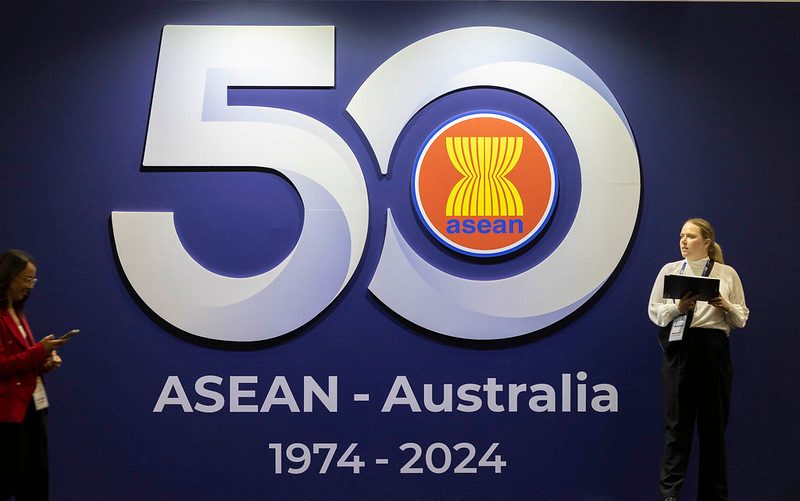
CANBERRA, Australia – It’s easy to find a Southeast Asian connection through key members of Australia’s Cabinet.
Penny Wong, Foreign Minister and leader of the government in the Senate, was born in Sabah, Malaysia and speaks the language. Don Farrell, Minister for Trade and Tourism, lights up as he talks about marrying his Bicolana wife in Pasig City some four decades ago. Chris Bowen, Climate Change and Energy Minister, is fresh off a holiday in Malaysia.
It’s the beginning of February 2024 and preparations were well underway in Canberra and in Melbourne for the Association of Southeast Asian Nations (ASEAN)-Australia Special Summit, a celebration of 50 years since Australia signed up to be the bloc’s first dialogue partner in 1974.
The summit starts on March 4 and culminates on March 6 with several high-level leaders’ meetings featuring ASEAN heads of government, and Australian Prime Minister Anthony Albanese.

Wong, who’s traveled to all ASEAN states save for Myanmar, puts it this way: “When Australia looks to the world, if you think about where we are, what is the first step? We see the countries of ASEAN. So for us, the notion of ASEAN centrality is not just an abstract concept, actually, it’s a reflection of our geographic strategic reality.”
The summit comes at a tense time for the bloc and the region.
“There’s obviously a lot of geopolitical strategic politics at the moment. So, rather than talking about what we’re for, what we’re against, or what we don’t want, we want to say what we’re for. We want a region where…our sovereignty is respected, and what does that mean?” Wong told a group of visiting journalists from all over Southeast Asia, in an interview held a month before the summit.
Middle powers
That Wong emphasizes the importance of international rules, diplomacy in resolving disputes, and of might not being right, is no surprise.
The Sydney-based Lowy Institute ranks the US and China as the only two superpowers of the world, with Washington having an 8.2-point advantage over Beijing. Australia is a “middle power,” sandwiched between Russia and South Korea.
“All of us in the international community, middle powers like our countries, as well as small nations, have our part to play in building a more stable, peaceful and prosperous future,” said Albanese on February 29 to welcome Philippine President Ferdinand Marcos Jr. to the Australian Parliament.
Lowy’s Asia Power Index measures how a country makes use of its resources – from diplomacy, cultural influence, defense networks, and economic ties, among other things. The Power Gap measures if a country has overutilized or underutilized its resources.
In the Indo-Pacific, according to the same Lowy ranking, the Philippines ranks 16th – between Pakistan and North Korea – as a middle power. Lowy Institute notes that Manila ranks highest in defense networks – the Philippines is a treaty-ally of the US, after all.
Several ASEAN countries are middle powers, too – Singapore, Indonesia, Thailand, Malaysia, and Vietnam all rank ahead of the Philippines based on Lowy’s measure.
Exploiting one’s potential as a middle power – and tapping like-minded fellow middle powers as partners – is an approach Australia and the Philippines are keen on improving, based on speeches delivered by Albanese and then Marcos before Australia’s parliament.
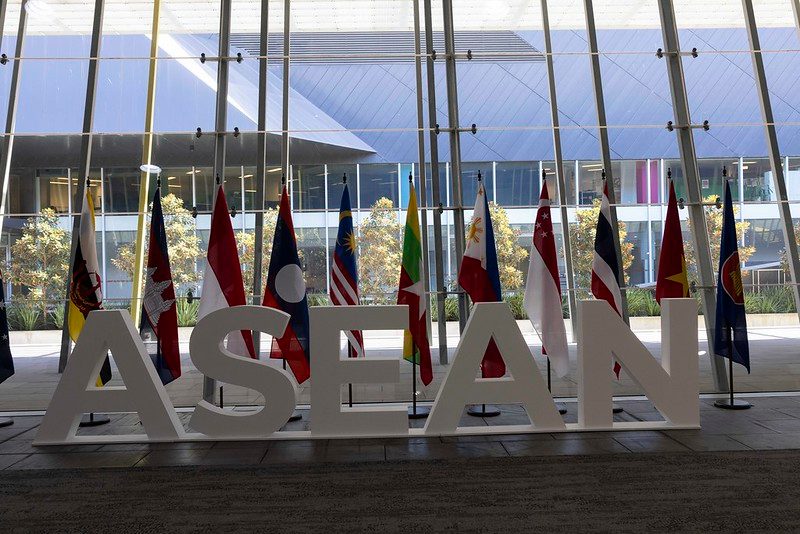
Marcos painted the Philippines as a country on the frontlines of a region facing “actions that undermine regional peace, erode regional stability, and threaten regional success.” “The security of Australia is bound with the security of the Philippines,” said Marcos on February 29.
Australia’s security and prosperity is bound not just with the Philippines but the rest of the region.
Upping trade ties
Farrel, a senator who oversees trade and tourism for Australia, pointed out Canberra’s shortcomings in trading with its Southeast Asian neighbors.
“We are part of the region. But we don’t do enough trade,” he told a group of journalists in early February.
Trade with Southeast Asia in 2022 totaled only over AUD 187 billion (P6.8 trillion), in contrast with AUD 300 billion (P10.9 trillion) in trade with China. Still, the Australian government notes that two-way trade with ASEAN is “greater than our two-way trade with Japan, the United States or the [European Union].”
Farrel sees natural ways to increase two-way trade with members of ASEAN.
First, there’s renewables. Australia aspires to be a “superpower” for renewable energy, but needs a bigger market for those technologies to scale up faster.
“We have all of the materials that go into the electric vehicles that are going to build the cars of the future, plus we have lots of sunshine but, more importantly, we have lots of space. And so we can increase, significantly increase, that – our contribution to renewable energy,” he said.
Digital trade is another opportunity, and so is agriculture – especially since Australia is able to produce much more than it can consume. Trade and energy are two of the five core themes of the Special Summit in Melbourne.
There’s a CEO Business Forum and an SME Conference, coupled with discussions on climate and clean energy, as well as the blue economy and maritime issues.
Australia is also hosting the Emerging Leaders’ Dialogue, designed to put a spotlight on the next generation of regional leaders.
Maritime security in focus
It’s noteworthy that the speakers at the opening of the Maritime Cooperation track were Australian Foreign Minister Wong and her Filipino counterpart Foreign Affairs Secretary Enrique Manalo.
Australia has grown to be among the Philippines’ key partners in maritime security, and that’s a relationship that’s been pushed further by the Marcos administration by elevating ties to strategic cooperation. A maritime security agreement was also signed just days before the summit kicked off, during Marcos’ visit to Canberra.
Australian National University International Relations lecturer Dr. Maria Tanyag said the invite for Marcos to speak in parliament is a “strong testament” to the Philippines’ importance in regional geopolitics, and a continuation of Australia’s desire to strengthen its ties with ASEAN.
As another island and trading nation, as Albanese himself pointed out, international norms and rules at sea are practically existential. In welcoming Marcos, Albanese said: “And for both of us, the United Nations Convention on the Law of the Sea is not an abstract notion or a theoretical question.”
It takes a village – or a coalition of like-minded countries, in this instance – to make sure the “rules-based order” is being followed.
“We continue to underscore the importance of [bilateral] defense and security cooperation and its contribution in the preservation of regional peace, security and stability. In view of the shared history of the two countries and common maritime heritage, the Philippines will continue to look at Australia as an important and reliable partner in defense and security,” said Manalo in a keynote address to kick off sessions on maritime cooperation.
He had earlier taken care to highlight that maritime challenges “cannot be addressed by any one of us alone.” He added, “In the last analysis, the world’s oceans comprise the ultimate global commons, a continuous and seamless expanse not bounded by the arbitrary lines of political cartography in their issues and concerns.”
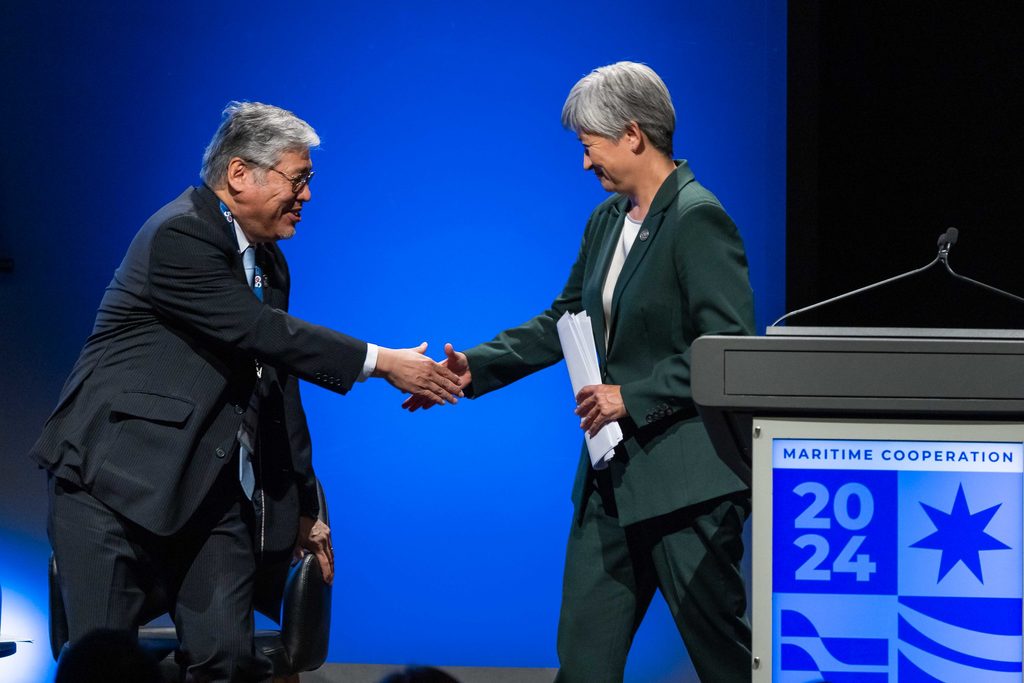
But agreement in ASEAN is easier said than done. The bloc has been criticized and continues to reap criticism for its seeming inaction in military-ruled Myanmar. Its engagements with superpowers US and China also vary.
Dr. Pichamon Yeophantong, a Deakin University associate professor and speaker on a session about geopolitical risk in the Indo-Pacific, said that ASEAN members have “different capacities at different levels” in terms of engaging with either Washington or Beijing.
An external partner, Yeophantong pointed out, helps “minimize” the risk of taking sides or having to pick between the two superpowers.
As tensions rise in the region and superpower competition heightens, it’s going to be up to ASEAN and its middle power allies to, to paraphrase Wong, think about what they want and resist the temptation to focus on what they don’t want.
“We want a region where…. our sovereignty is respected, and what does that mean? That we can make our own choices. We want a region where rules and principles guide the resolution of disputes, so that it’s not just power that determines, size that determines, our purpose,” she said ahead of the summit.
Engagements among leaders in the ASEAN-Australia Special Summit officially begin on Tuesday, March 5, with an official welcome hosted by Albanese. ASEAN and Australian heads of government will be meeting until May 6. – Rappler.com
This reporter visited Australia upon the invitation of the Department of Foreign Affairs and Trade for an International Media Visit that saw journalists from all over Southeast Asia visit Melbourne, Canberra, and Sydney, ahead of and during the ASEAN-Australia Special Summit. The contents and views expressed by the writer are all her own.
Add a comment
How does this make you feel?


![[ANALYSIS] How one company boosts farmer productivity inside the farm gate](https://www.rappler.com/tachyon/2024/06/bioprime-farmgate-farmer-productivity-boost.jpg?resize=257%2C257&crop=465px%2C0px%2C1080px%2C1080px)

![[In This Economy] Is the Philippines quietly getting richer?](https://www.rappler.com/tachyon/2024/04/20240426-Philippines-quietly-getting-richer.jpg?resize=257%2C257&crop=194px%2C0px%2C720px%2C720px)





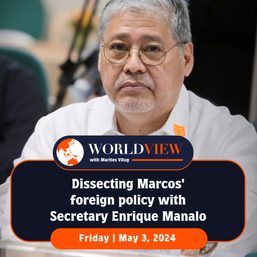
![[OPINION] Expectations for Philippines-US-Japan trilateral cooperation: A view from Japan](https://www.rappler.com/tachyon/2024/04/tl-ph-usa-jp-cooperation.jpg?resize=257%2C257&crop=447px%2C0px%2C1080px%2C1080px)
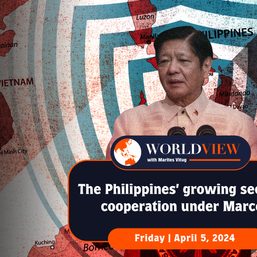
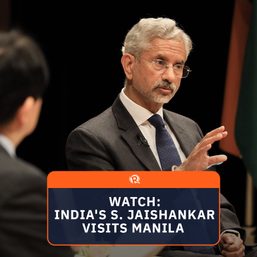



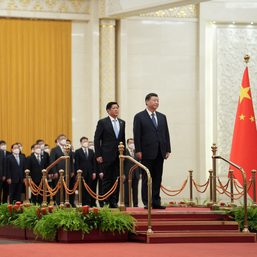




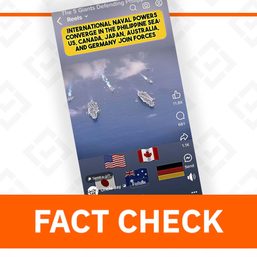







![[Just Saying] SONA 2024: Some disturbing points](https://www.rappler.com/tachyon/2024/07/TL-marcos-sona-points-july-23-2024.jpg?resize=257%2C257&crop=335px%2C0px%2C720px%2C720px)

There are no comments yet. Add your comment to start the conversation.